A Brief History of St. Stanislaus, Bishop and Martyr
This church is the visible sign of the faith and devotion of the Polish Catholic pioneers who originally settled the south side of Milwaukee. Although Poles had been trickling into Milwaukee for several years, it was not until 1866 that they were numerous enough to organize a parish. Thirty families bought a small brick church, formerly owned by Lutherans, and dedicated it to St. Stanislaus Bishop and Martyr, who was beloved by the Polish people.
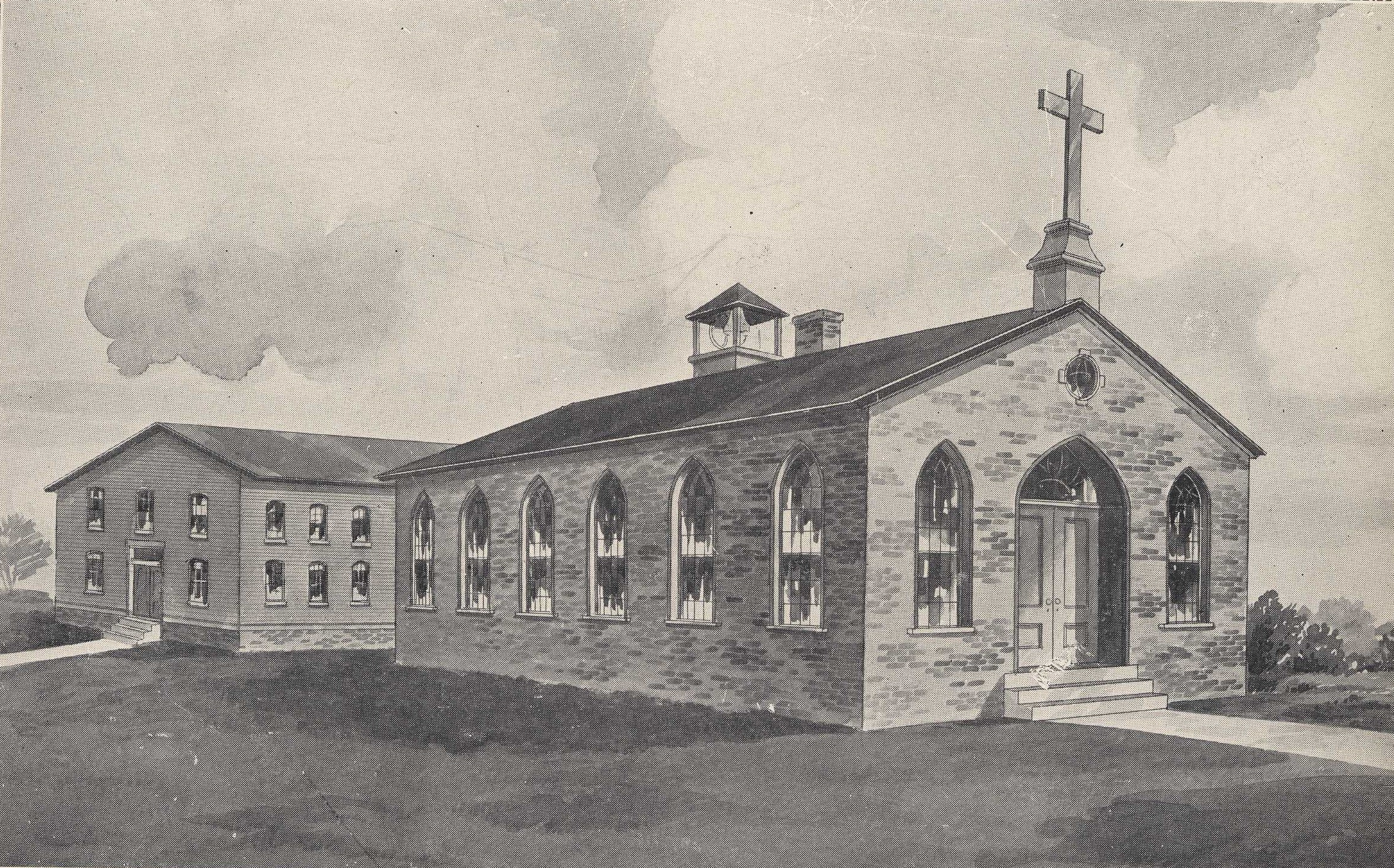
First Church building, 1866
EARLY HISTORY
With the explosion of the Polish population in the city over the next few years, a new church was soon necessary. In 1872, the cornerstone was laid. A year later, the cream-city brick building with its landmark twin spires was completed.
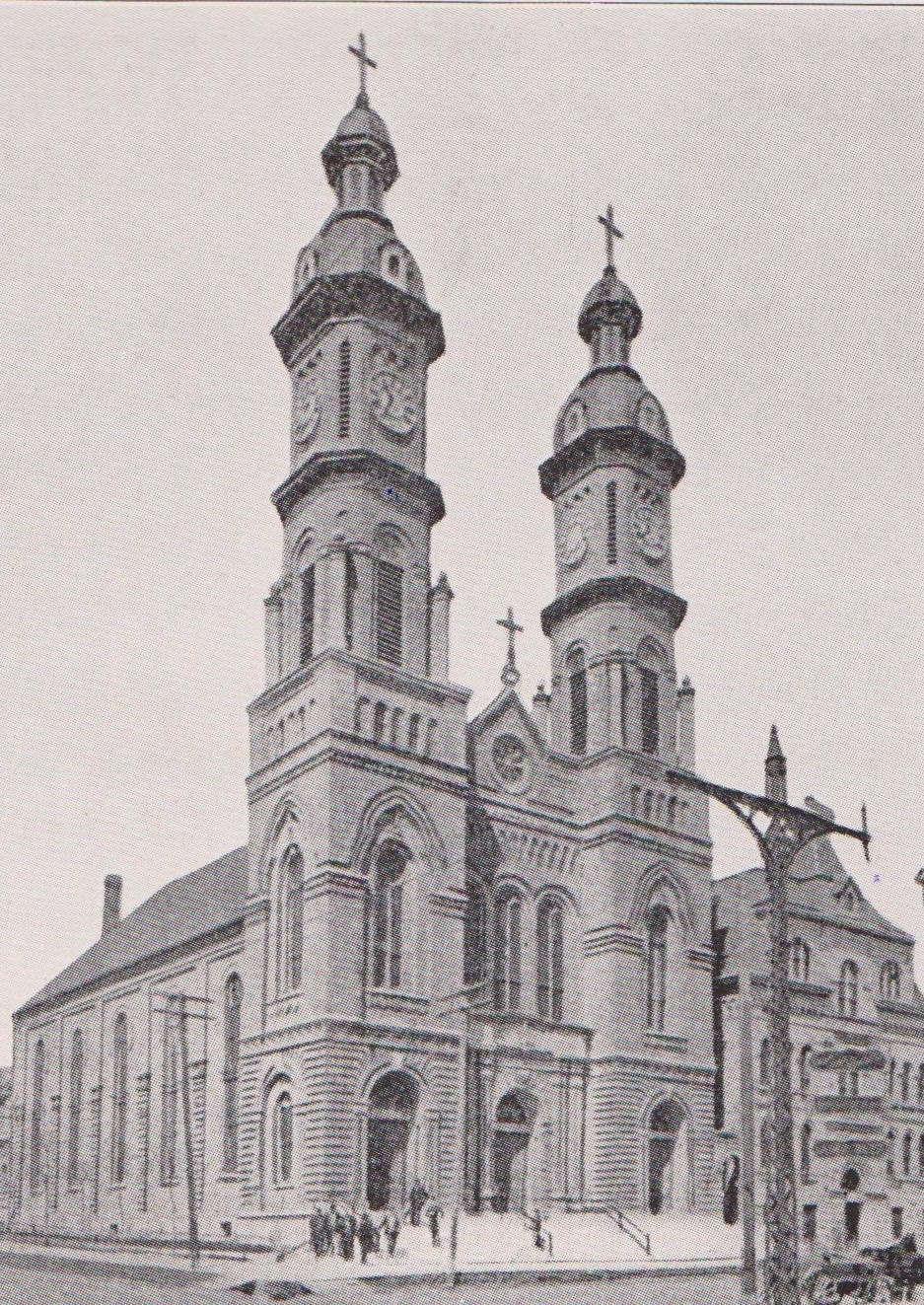
Exterior of Church with school building, 1893
In 1873, St. Stanislaus established that the first Polish parochial school in America. It was a simple two-story frame building. Its first teacher, Sister Tyta, was also the first Polish nun in America.
In 1882, St. Stanislaus recorded 96 marriages, 589 baptisms, and 520 confirmations! This immense growth prompted the founding of several other Polish Catholic churches in Milwaukee.
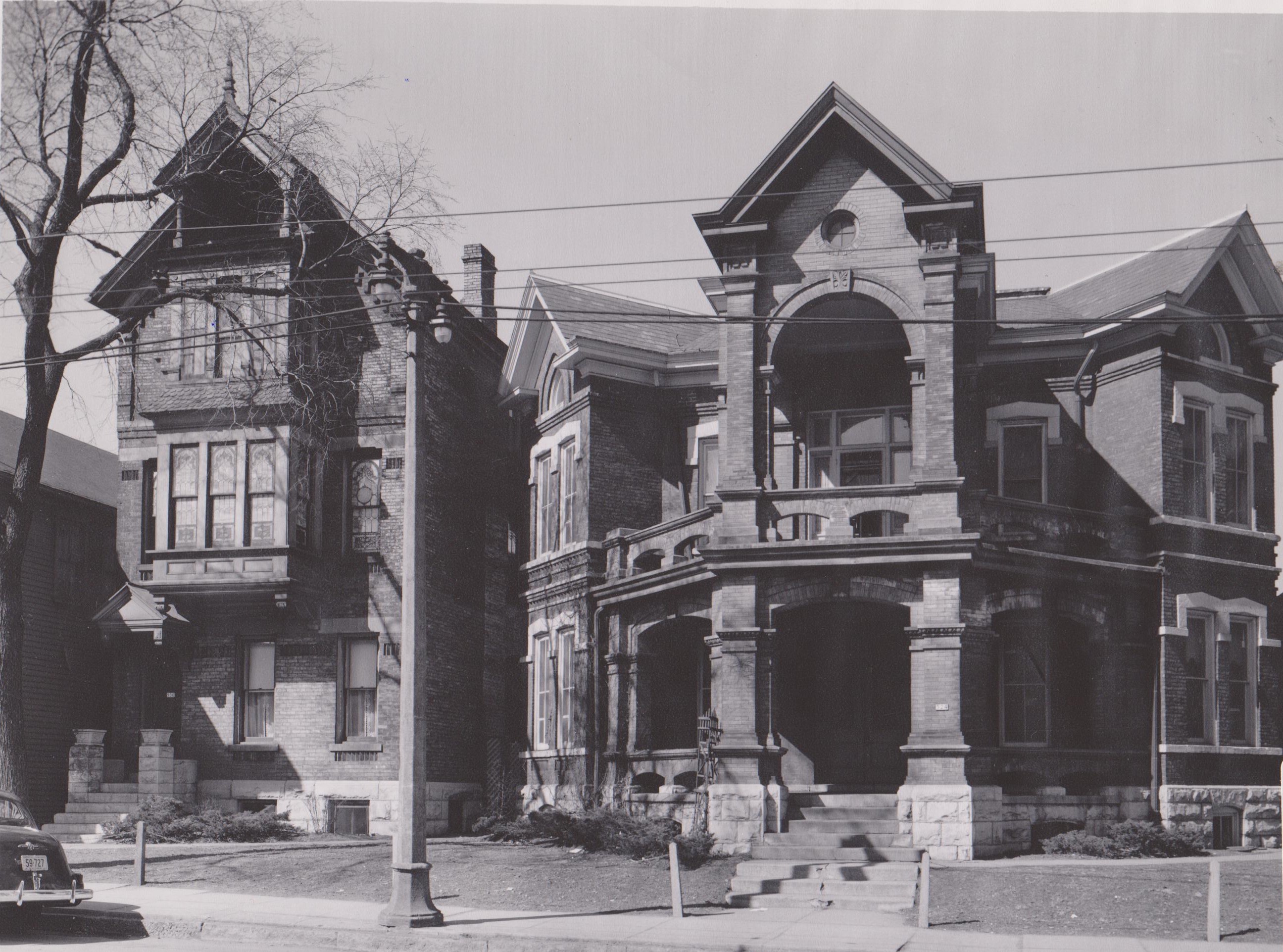
Convent and Rectory, 1882
In 1894, under the direction of Fr. Gorski, the original interior was renovated, and some of the interior brick walls were lined with marble. A year later, under Fr. Slulerecki, more interior marble was added.
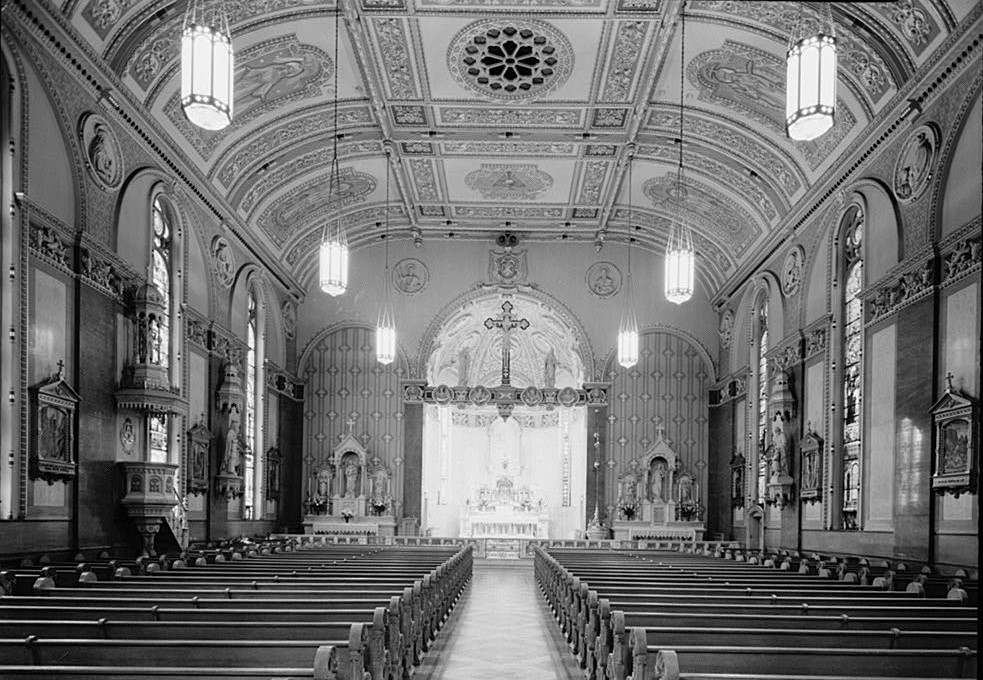
Interior of church, circa 1930s
Also in 1894, four immense bells weighing a total of 10 tons — the largest, over 72 inches and weighing 5,000 pounds — were placed in the signature twin spires. The names of all the donors are cast into the bells.
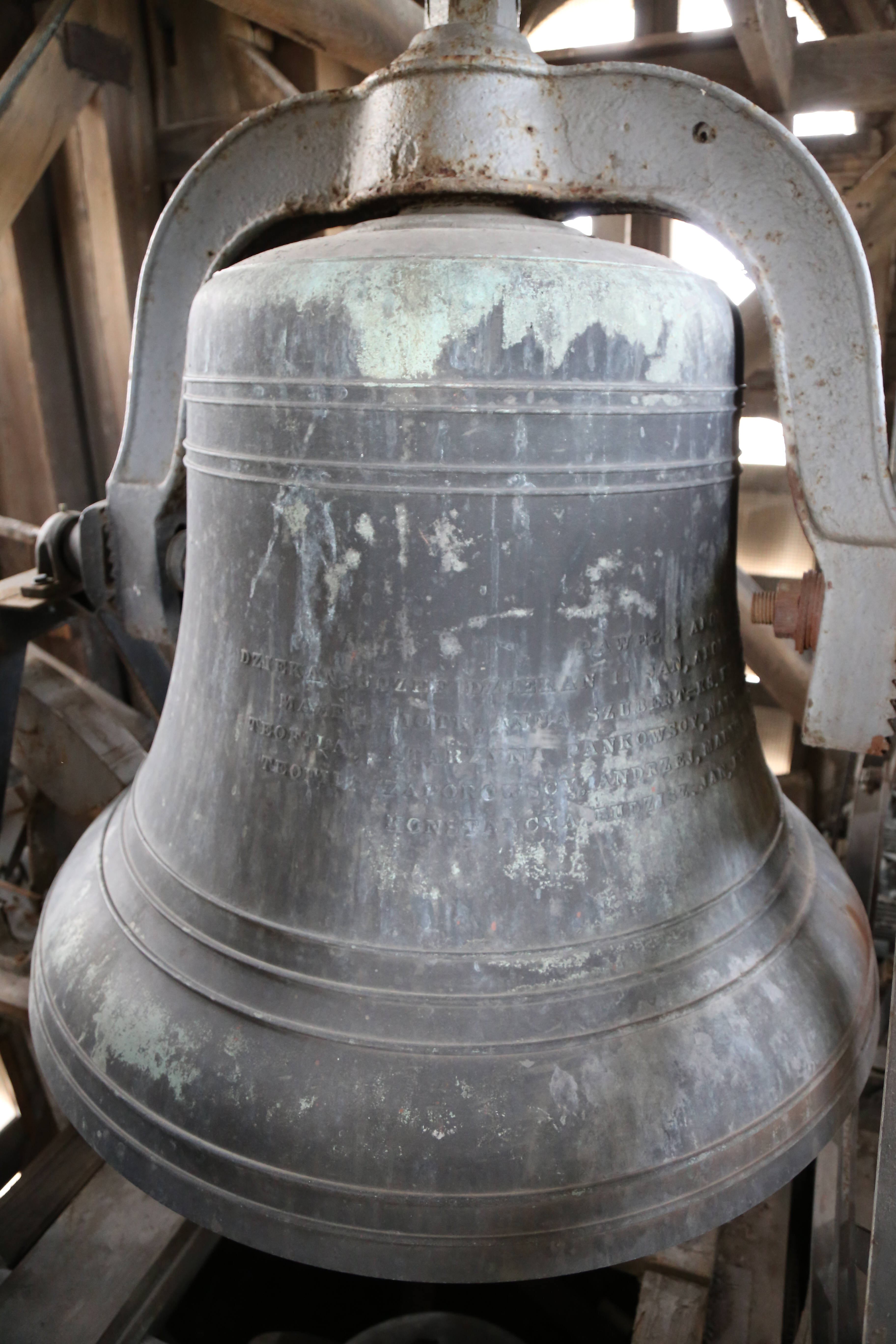
During the Depression years of the early 1930's, under the direction of Fr. Jurasinski, the church was redecorated again and several other parish buildings were renovated. The current 4-story school was also built.
AMBITIOUS RENOVATIONS
In 1958, Msgr. Punda became pastor. He had been assigned to St. Stanislaus in 1939, and except for service as a military chaplain during World War II, he called St. Stan's home. He initiated the third — and most major — renovation of the church in 1960 in preparation for its centennial in 1966. This renovation coincided with the Second Vatican Council and the millennial celebration of Christianity in Poland.
During 1960, the twin towers tuck-pointed, and the domes were completely removed and reconstructed of aluminum covered steel. The domes were covered with 23-carat gold leaf. On September 12, the Feast of the Exaltation of the Holy Cross, the new golden towers, with their 10-foot stone crosses, were lifted into place. The clocks on the towers were completely restored and given new mechanisms, and the numbers on the faces of the clocks were covered with gold leaf.
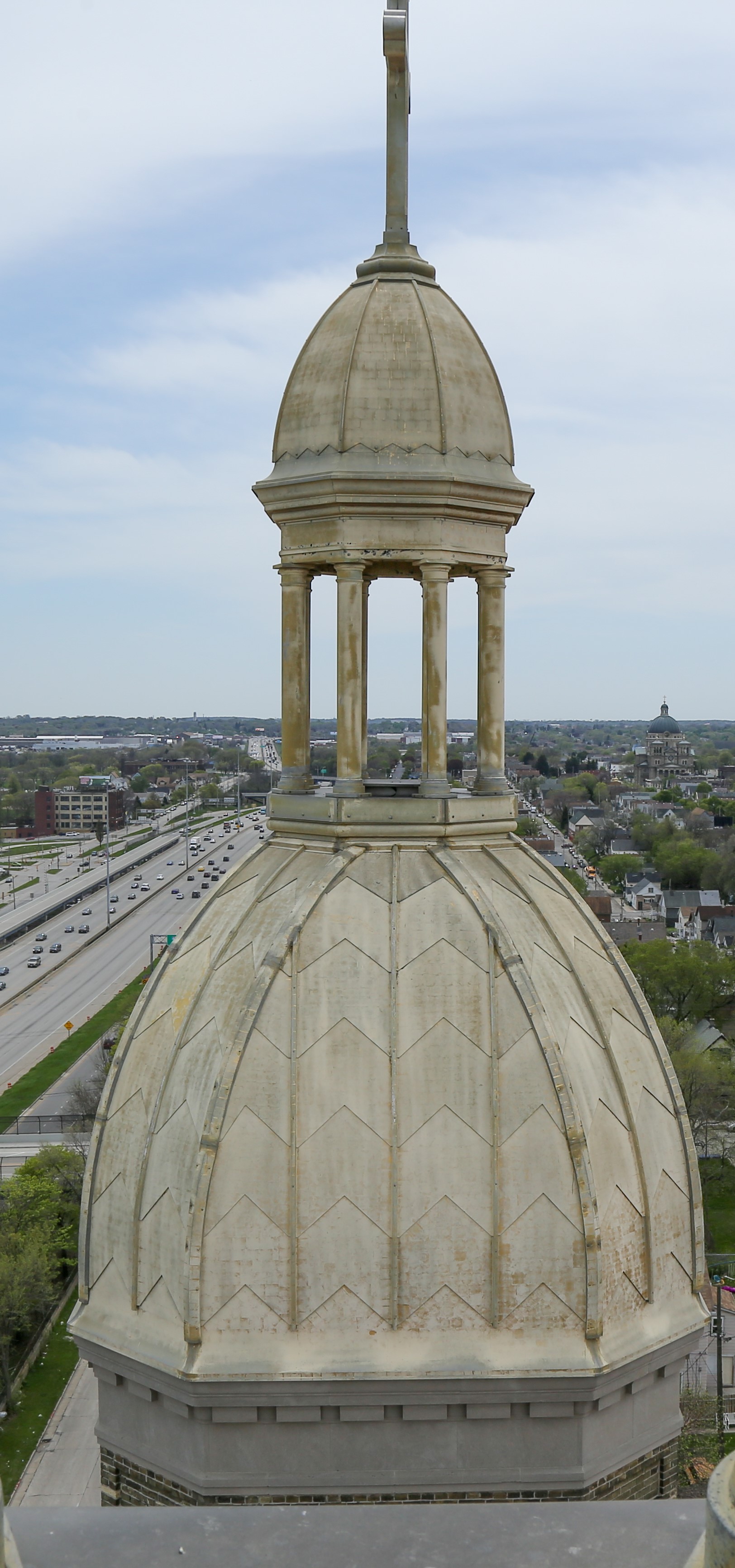
Bell Tower Dome, 1960
Interior work on the church was delayed by a fire in 1962, which caused significant damage to the left side altar and smoke damage to the entire church.
In 1963, the Victorian rectory was completely renovated and remodeled with simpler lines, modern conveniences and a concrete façade. An ambulatory and chapel were constructed to connect the church and rectory buildings.
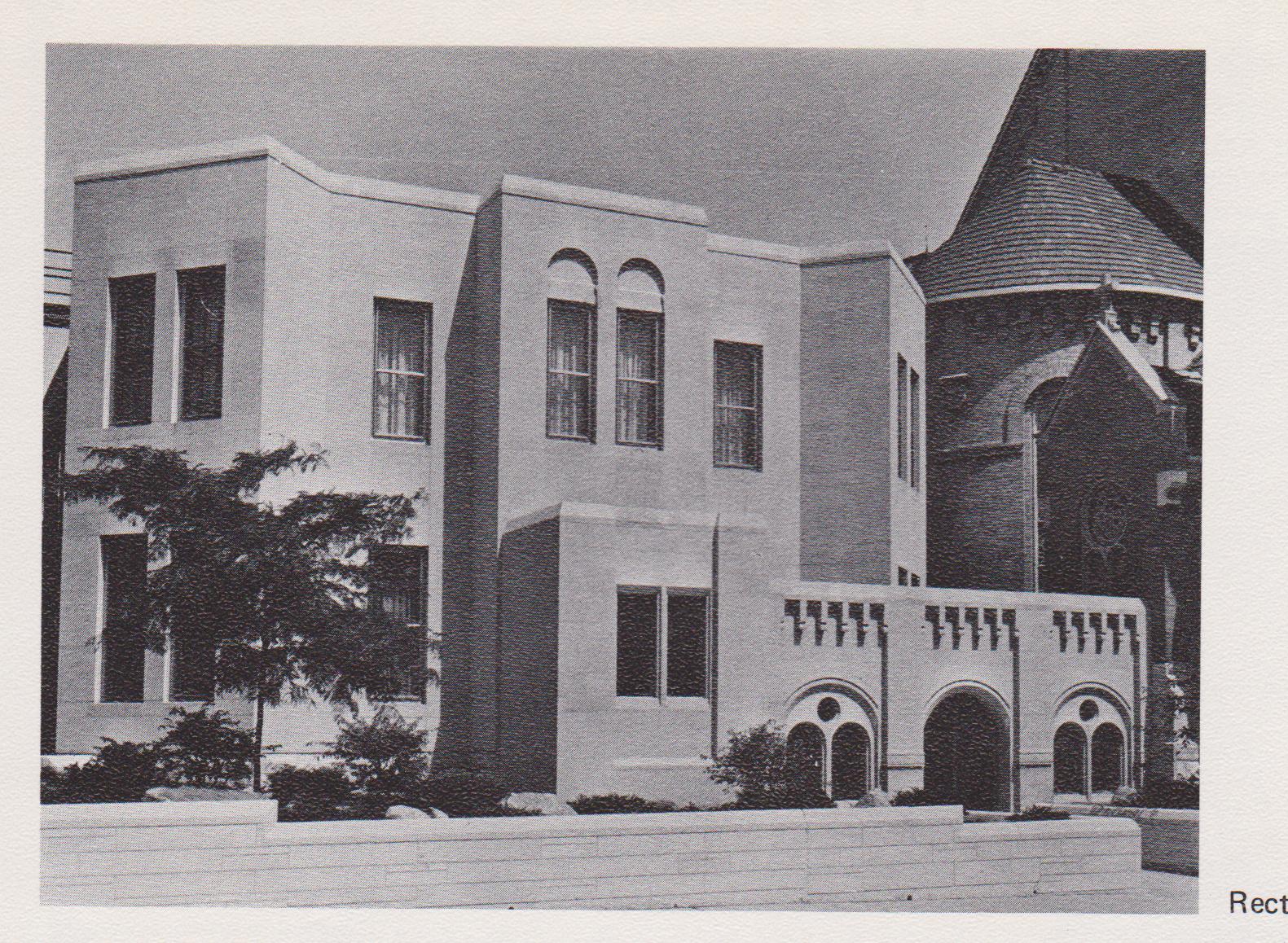
Rectory Exterior , 1960
In 1964, all the stained glass windows in the church were removed. The old windows, worn through time, had begun to fail, and were considered a security and safety hazard. They were replaced with inch-thick dalle de verre windows, which were designed to add a warm ambient glow to the interior.
In 1965, the interior of the church received renovations. Roman travertine marble was installed on all the remaining interior walls. A new free-standing altar, constructed from portions of the marble and bronze of the high altar, was moved forward into the sanctuary. The high pulpit was moved thirty feet closer to the altar. All but two small portions of the communion rail were removed, and the sanctuary was extended 15 feet into the nave.
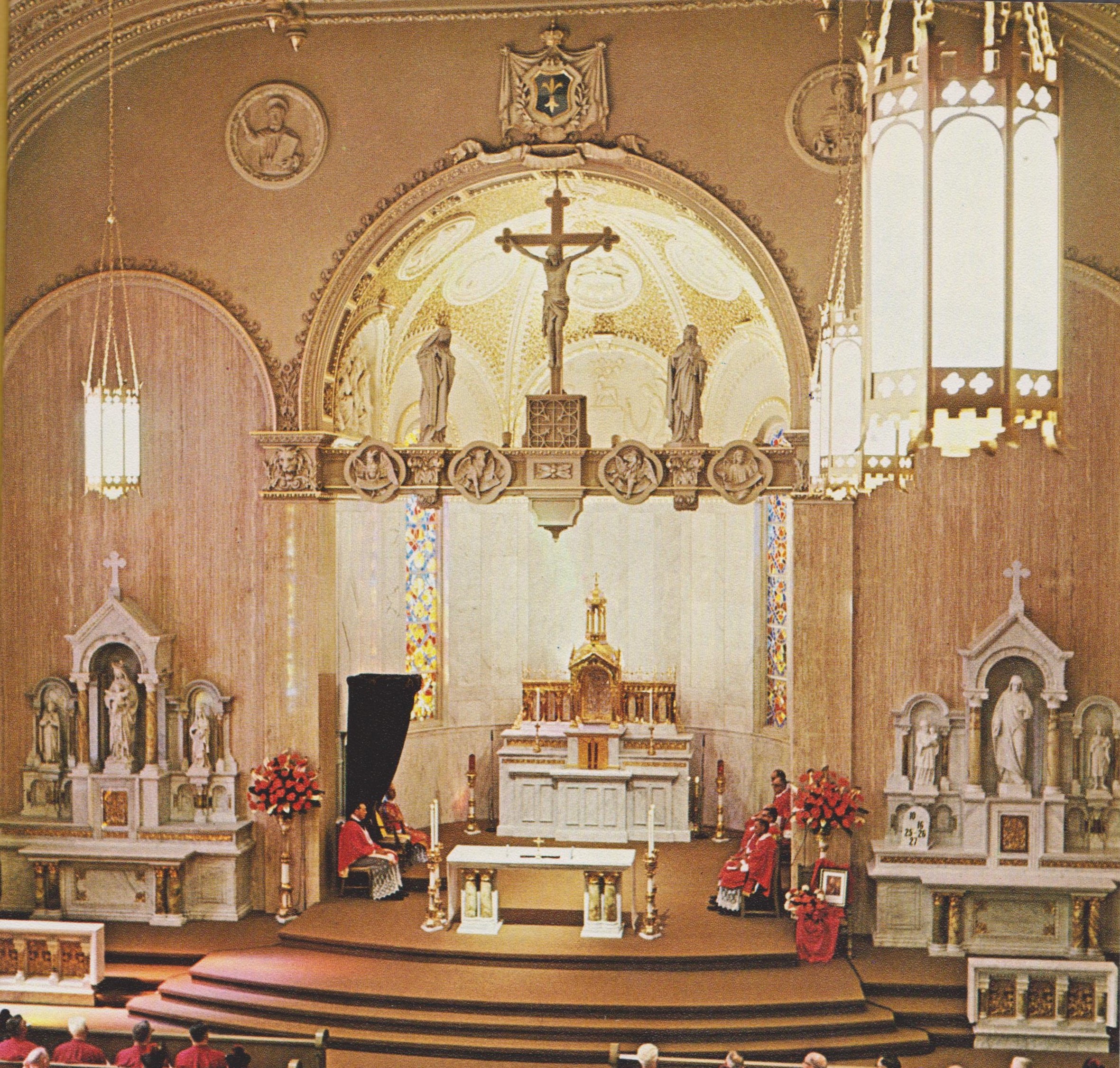
Church Interior, 1966
The baptismal font, a beautiful creation of marble and bronze, formerly stood next to the Sacred Heart side altar. In the 1965 renovation, it was moved into the new chapel on the left side of the sanctuary.
The final construction during this renovation period was the installation of the exterior shrine of Our Lady of Czestochowa, which was added as a lasting memorial to the centennial of the parish and the millennium of Christianity in Poland. It is believed to be the largest mosaic image of the Miraculous Virgin in the world.
RESTORATION TO FORMER GLORY
As the parish numbers declined throughout the 1970's and 80's, the future of this church was uncertain. In 2007, Archbishop Timothy Dolan gave St. Stanislaus Parish to the care of the Institute of Christ the King, Sovereign Priest and, in 2008, erected St. Stanislaus Oratory. The Priests of the Institute are dedicated to the celebration of the Extraordinary Rite of the Mass (1962 Latin Rite). The Ordinary Rite Mass (English) is still offered on the Saturday vigil.
With the advent of the Institute at St. Stanislaus, new life has come to the venerable old church. Hundreds of families regularly attend the Extraordinary Rite Mass here on Sundays and weekdays.
Beginning in 2008, work began to restore the venerable and historic church to its original glory. The free-standing altar has been removed, and the High Altar reconstructed. The sanctuary has been restored to its original location and floors rebuilt. A new marble communion rail was to enable communicants to receive kneeling, and choir stalls have been added to the sanctuary for the additional servers necessary for High Mass. In addition, the beautiful, antique vestments have been recovered and put back into use.
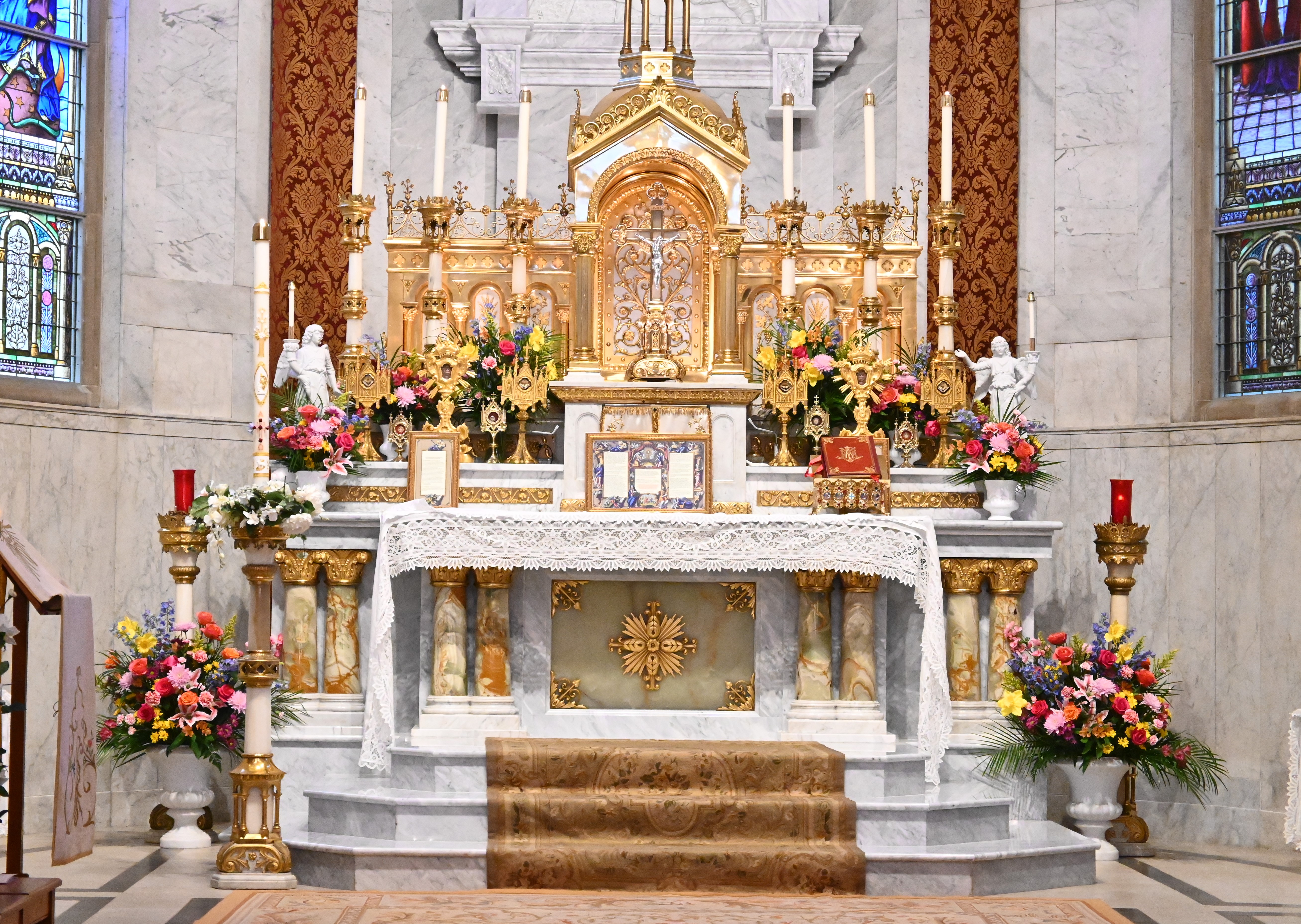
Restored High Altar, 2023
In 2016, the entire interior of the church was repainted according to the original designs. Marble – long hidden behind the 1960s paint – was cleaned and restored.
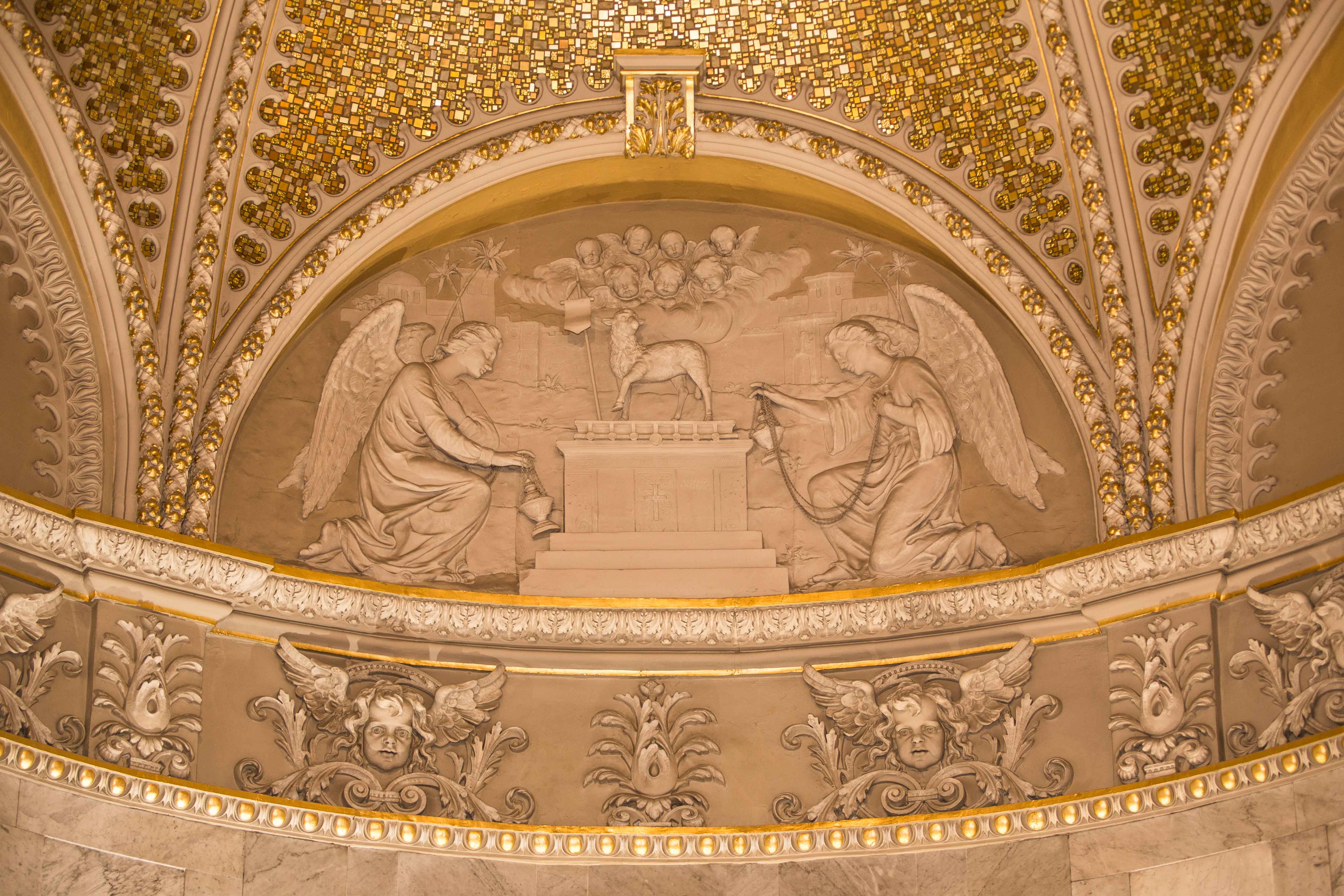
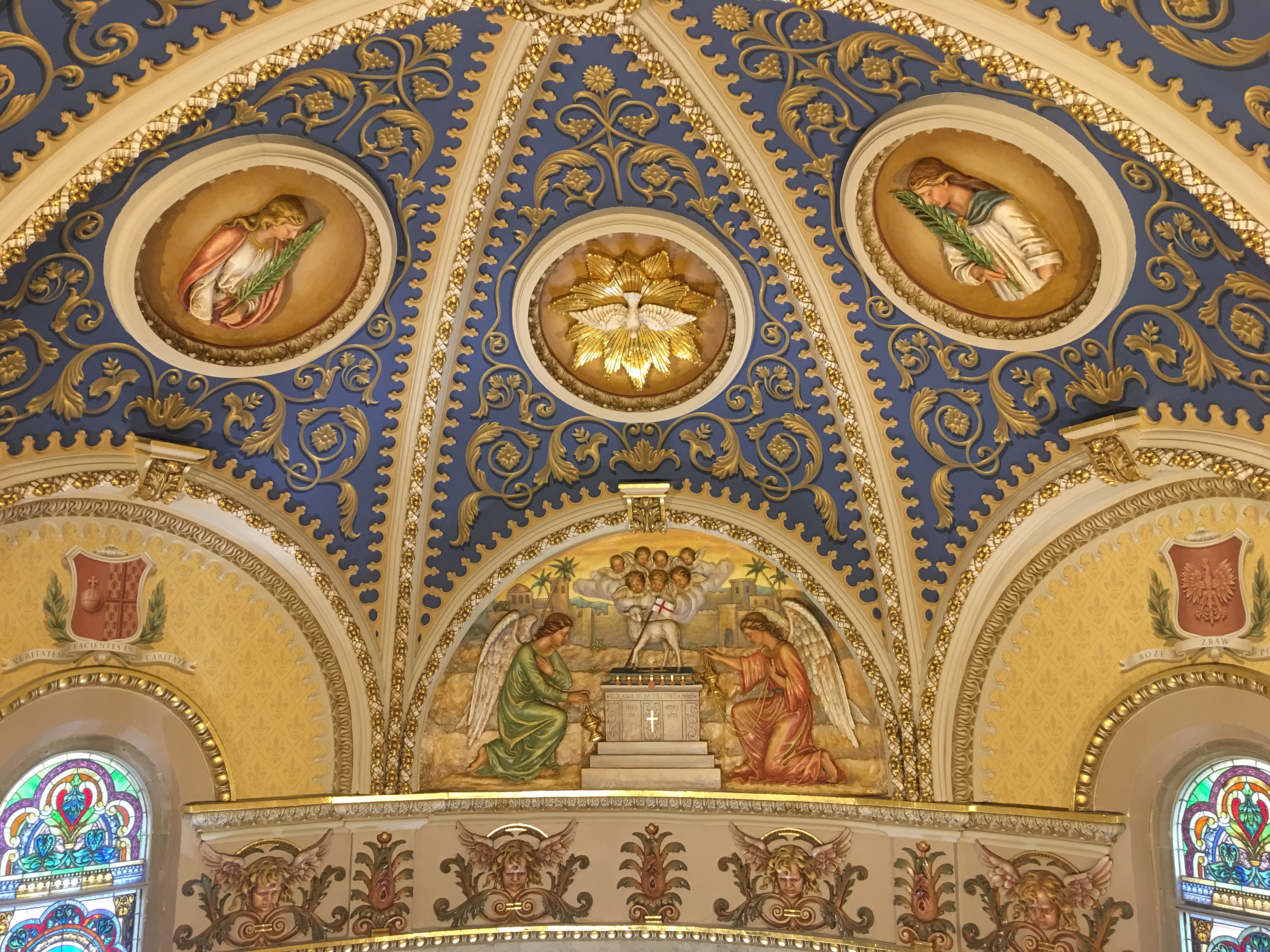
Sanctuary Painting: Above, 1966 - Below, 2023
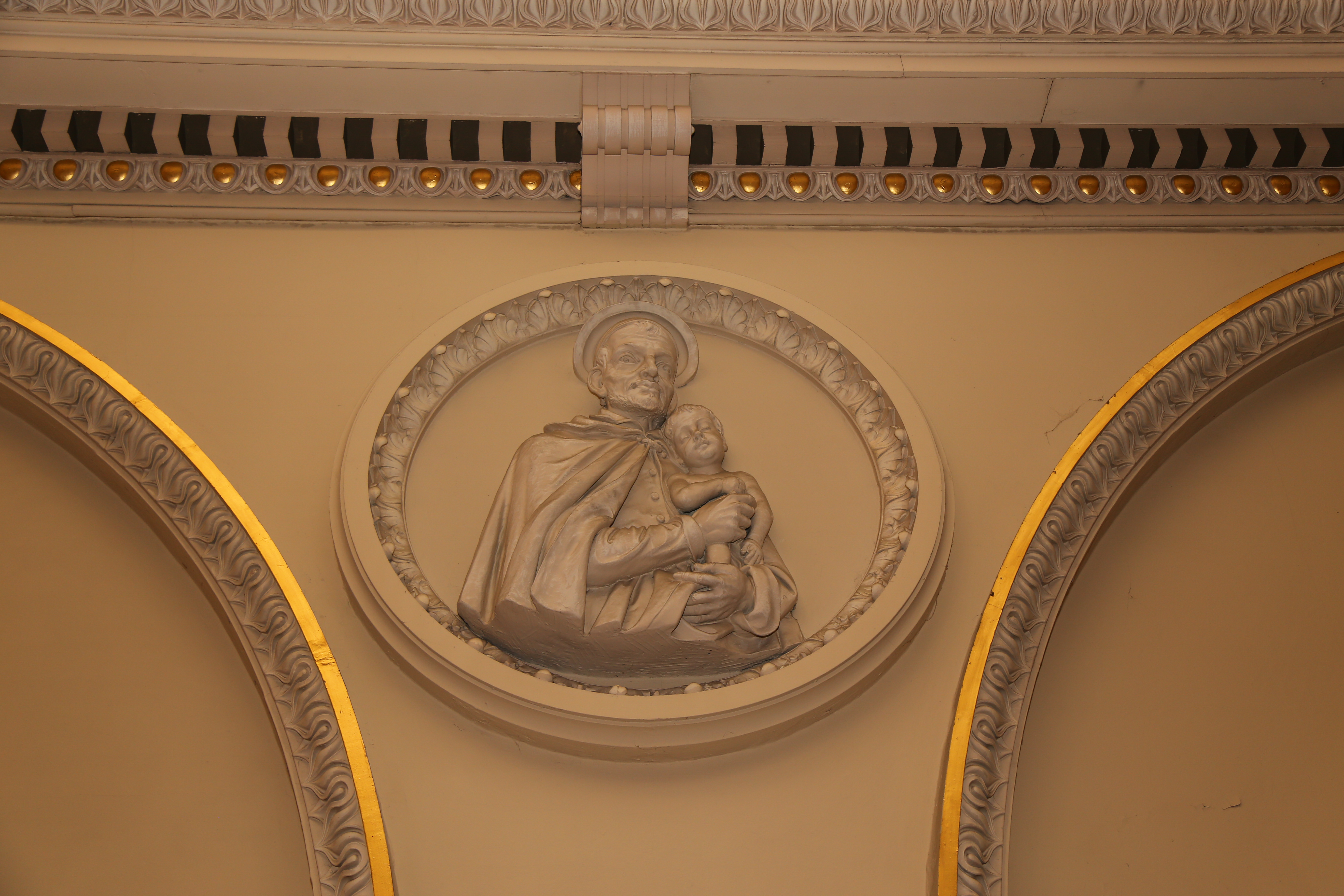
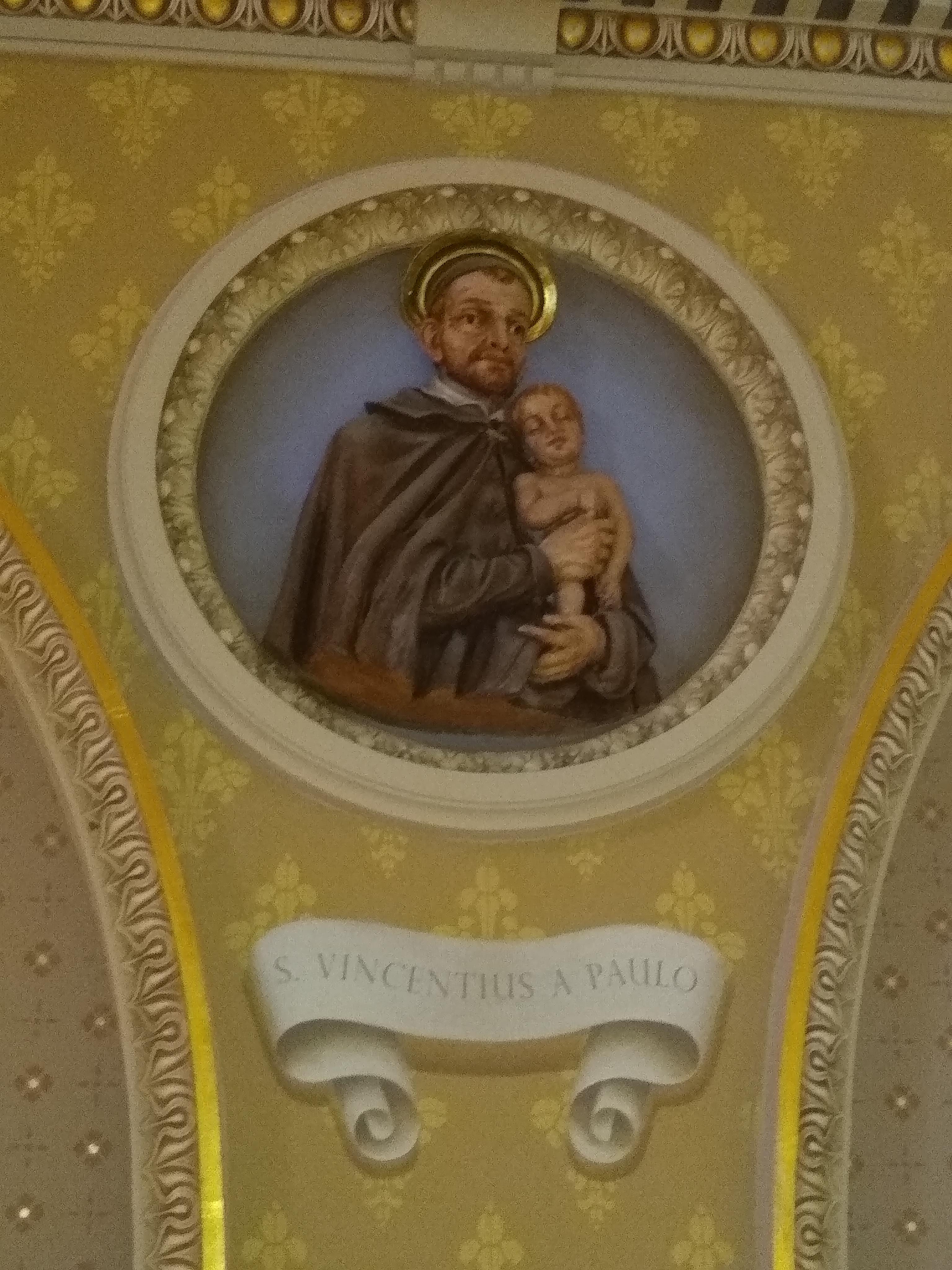 Nave Painting: Top, 1966 - Bottom, 2023
Nave Painting: Top, 1966 - Bottom, 2023

 Nave Painting: Top, 1966 - Bottom, 2023
Nave Painting: Top, 1966 - Bottom, 2023In 2013-14, the priests’ sacristy was restored, uncovering the delicate inlaid wood floors, and refinishing all the cabinetry. The 1960s chapel was restored to be a sacristy for altar servers, a place for a reserve tabernacle, and storage for altar furnishings. St. Stanislaus was asked to be custodian of a large relic collection, which is also housed in this sacristy.
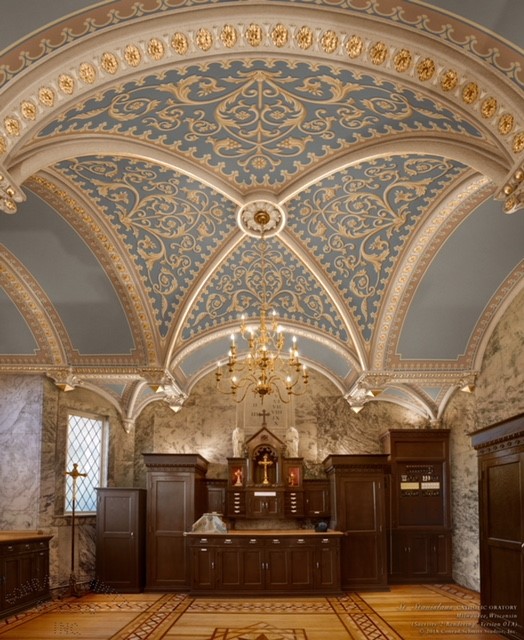

Priests' Sacristy Restoration, 2014
Plans were begun to create new windows, but no photos of the original windows existed. In 2014, a miraculous find of pieces of the original glass enabled artists to design windows based on the original designs. The new windows were installed throughout the entire church, beginning in 2015 and continuing to completion in 2021.
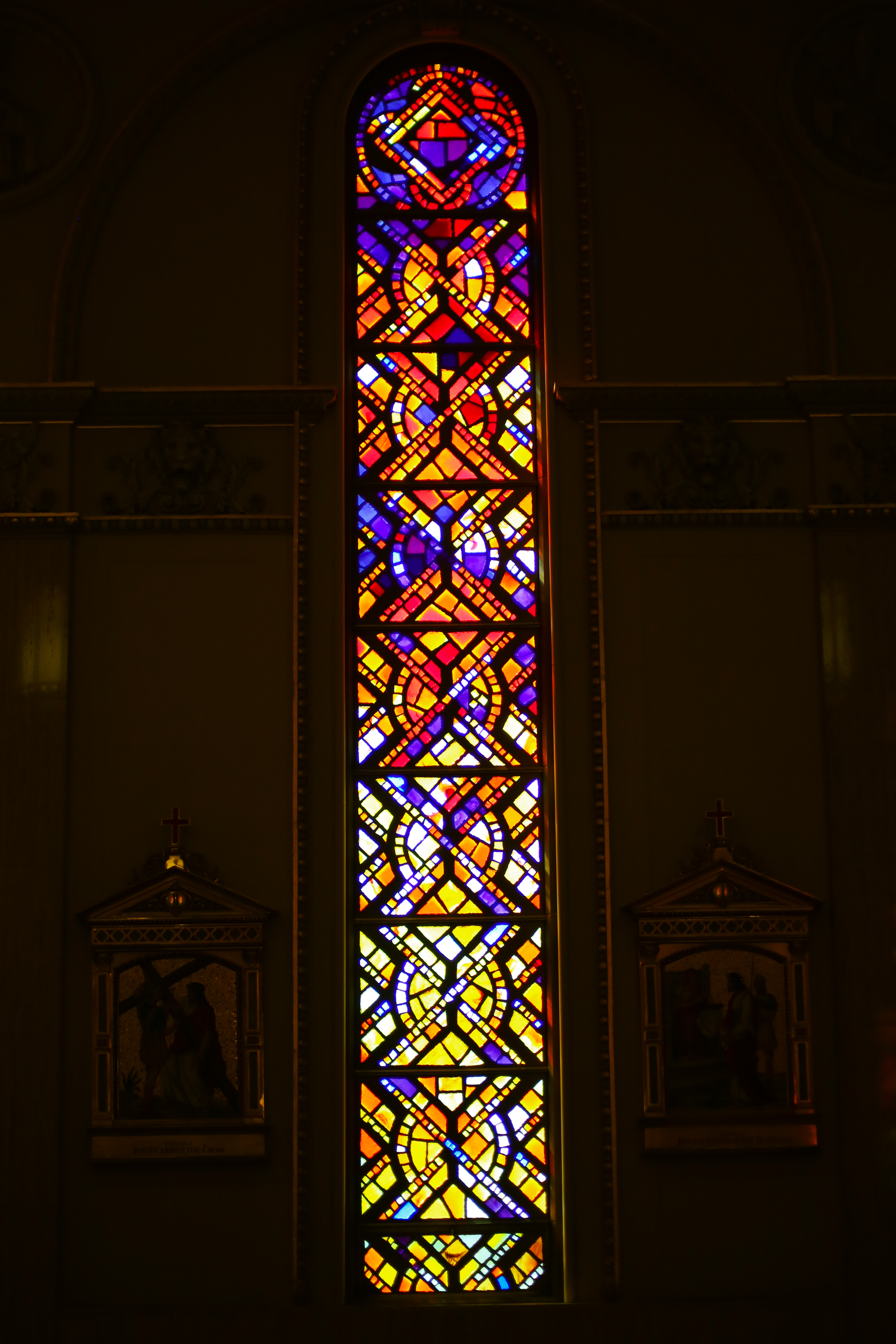



Stained Glass: Above, 1966 - Below, 2023
Sparkling new chandeliers were installed in 2019, designed to restore the look of the original chadeliers and to complement the church’s architecture. They are far more energy-efficient and easier to maintain.
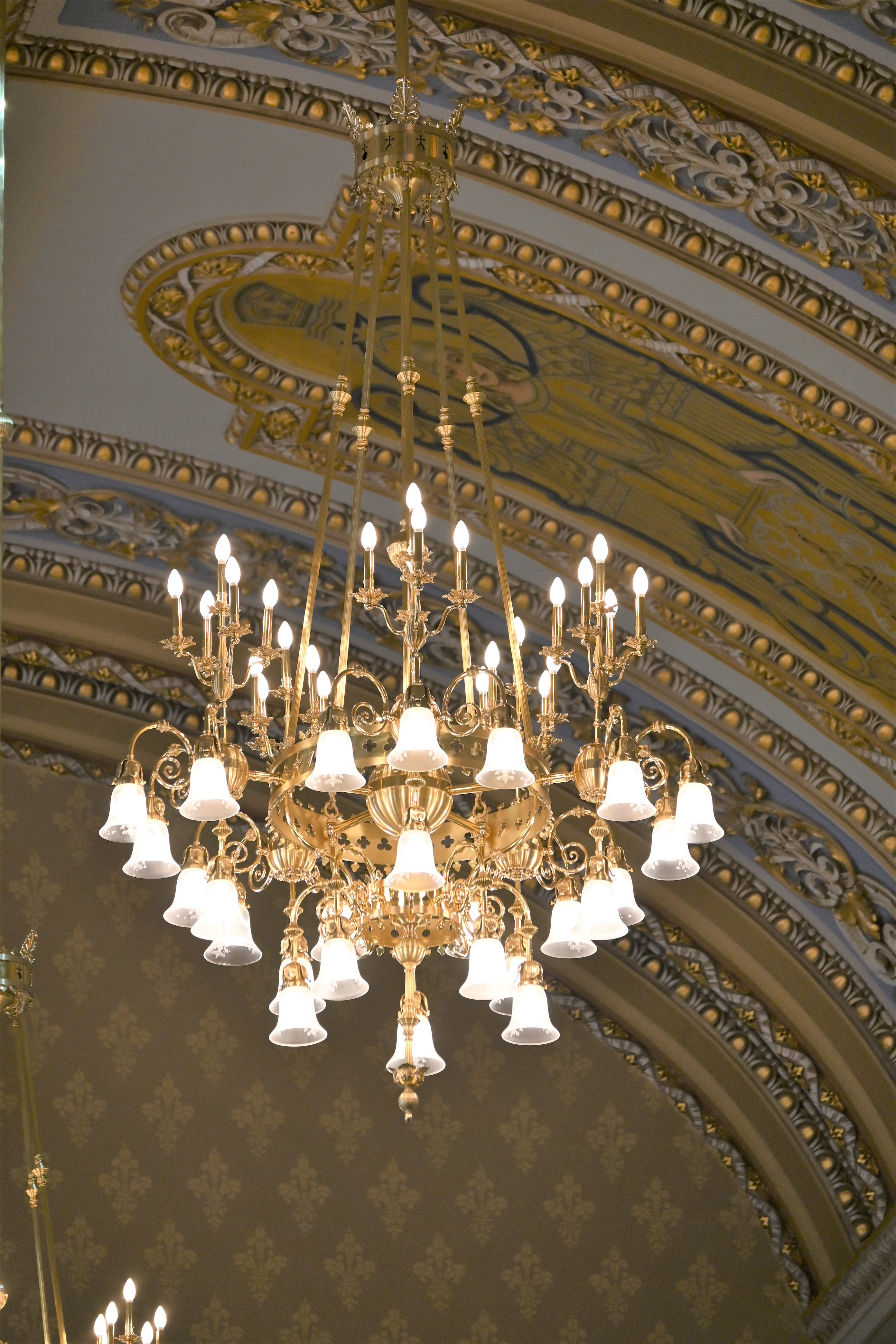

New Chandeliers, 2020
The choir loft is adorned with a medallion of St. Cecelia, patroness of musicians Here, the choir sings Gregorian chant and other beautiful ancient Masses. In 2011-12, the organ received a much-needed restoration. The pipes were cleaned and regulated. The action was rebuilt, as were the bellows and control system. A console, formerly built and installed at the minor seminary, was moved and installed here. In 2017-18, the loft itself was redesigned, cabinetry and furniture added, and new stairs built.
On the exterior of the church, the 1960s aluminum domes on the towers had deteriorated, so, in 2019, the domes were completely removed and rebuilt. They are now covered in copper which will last up to 100 years. The exterior brickwork was completely cleaned and tuckpointed and the roof was repaired. New wooden exterior doors were built according to the original designs and installed. The gardens, sidewalks, and stairways were also carefully restored.
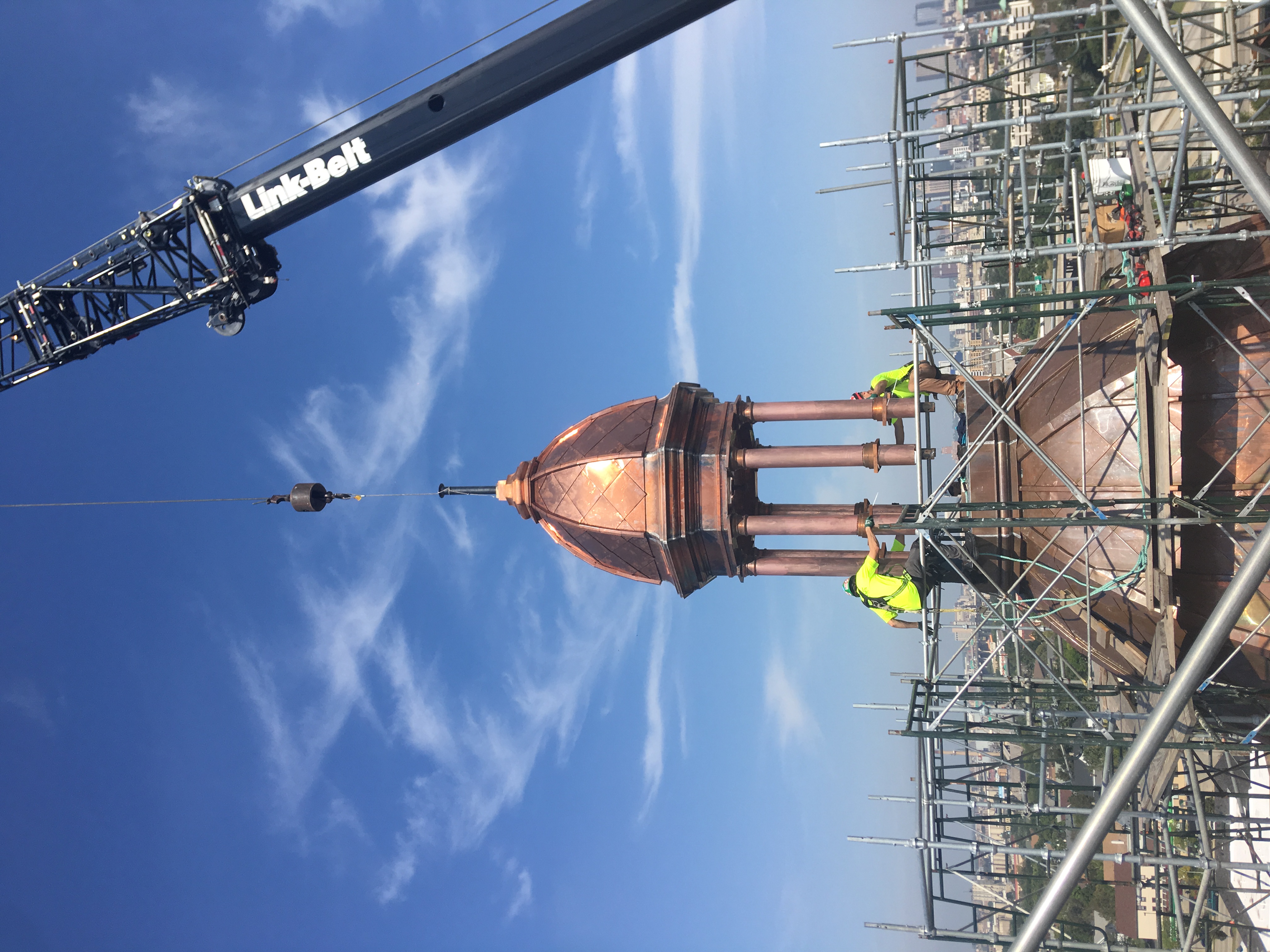 Restored Dome on Bell Tower, 2019
Restored Dome on Bell Tower, 2019
 Restored Dome on Bell Tower, 2019
Restored Dome on Bell Tower, 2019The rectory building was also completely restored to its former Victorian glory with restored plasterwork, wood floors, cabinetry, paint and fixtures.
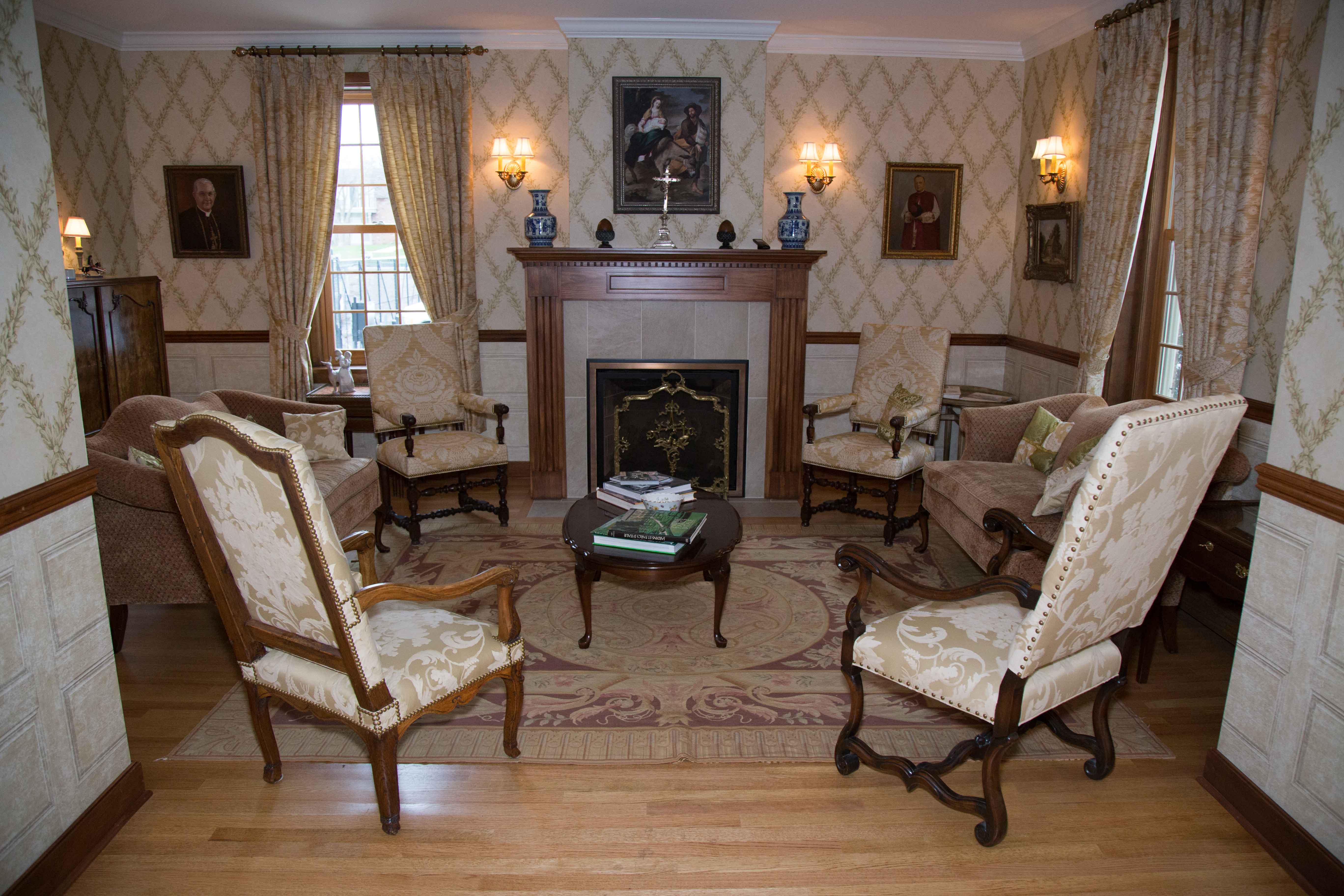
Rectory Library, 2020
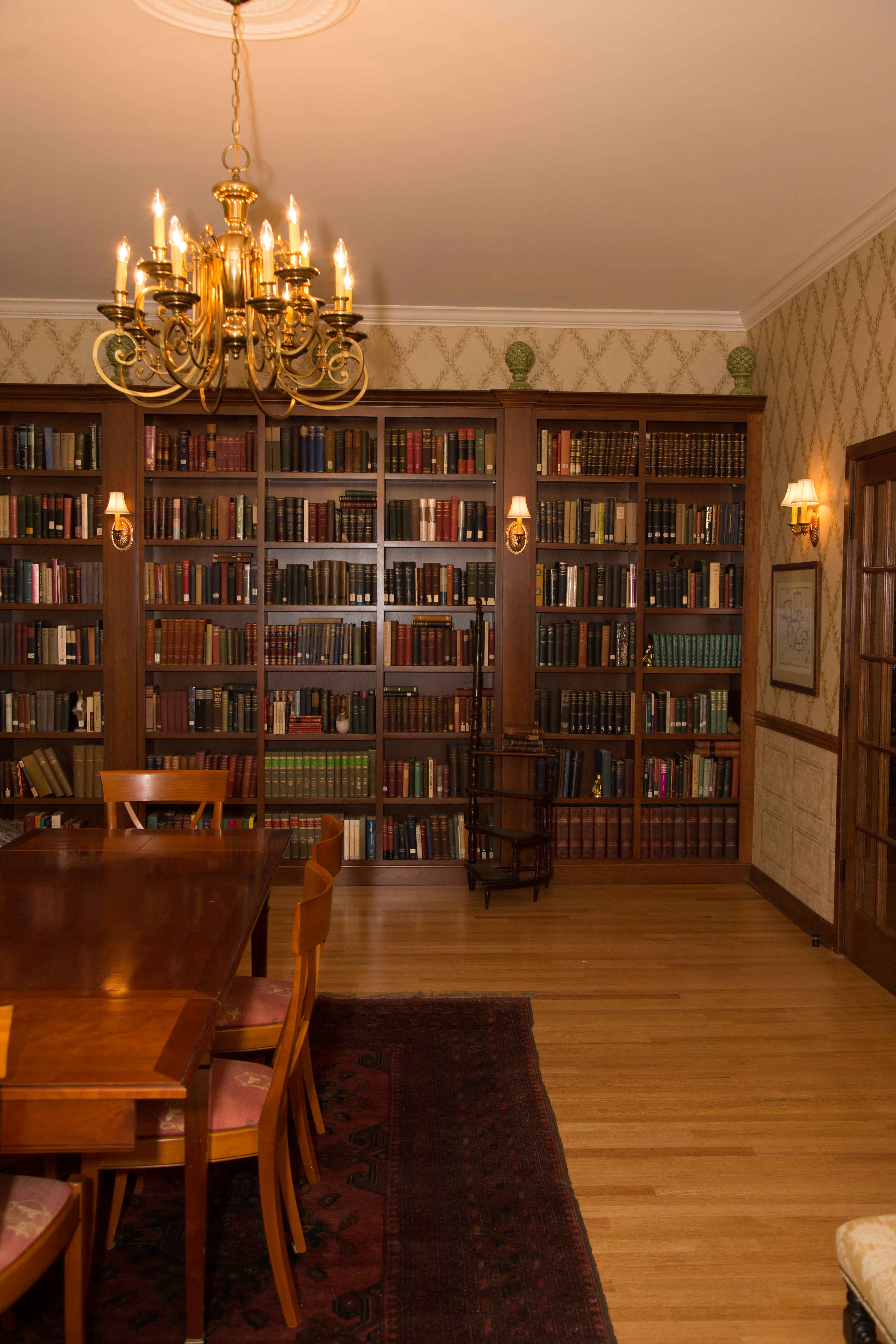
In 2022, the parish of St. Stanislaus celebrated its 150th birthday. The care and preservation of this venerable building will continue so that new generations of Catholics will be able to give glory to God within its hallowed walls.
For a more complete history and many more photos, please stop in the rectory office and ask for a copy of the parish book, "Gate of Heaven: St. Stanislaus at 150 Years 1866-2016".
